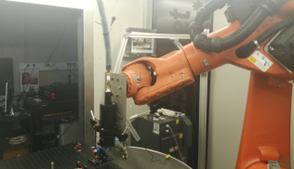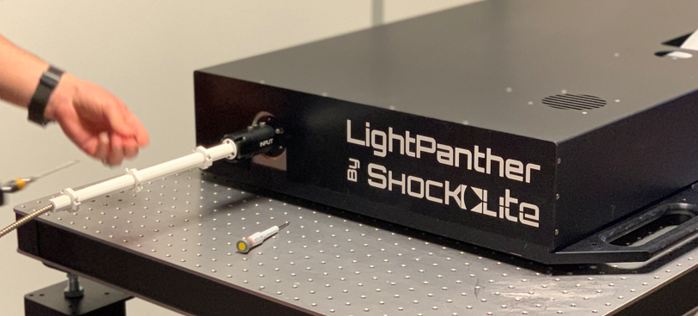Fibered Laser Shock Peening
Process highlights
Let us start by historical overview of what existed before Laser Shock Peening.
Peening processes have been around for more than 150 years after the appearance of the shot peening technique in the 1870’s. Such a process relies on striking metal, ceramic or glass shots on metallic parts in order to apply a plastic deformation and therefore bring compressive residual stress to the part. This surface treatment helps the extension of the service life of parts by increasing their resistance to stress corrosion, corrosion fatigue and the propagation of surface cracks.
However, shot peening also suffers numerous disadvantages. In fact, the applied shots can leave detrimental foreign object damages (FODs) on the treated surfaces which can be problematic for both their functionality and physical aspect. It also goes without saying that blasting shots is far from being a very deterministic and precise process.
To overcome such inconveniences, shots were replaced by laser beams which could generate more directive and precise shock waves on the treated materials. This feature allows many practical benefits among which the high level and depth of the applied residual compressive stress and the lower generated surface roughness are the most important, allowing a fatigue life increase of parts by, at least, a factor of 5.
What we offer
A vast majority of laser peening systems have been using free-space propagating beams, raising flexibility and eye-safety issues. As an answer to these problems, Shocklite has democratized the use of fibered laser sources thanks to the LightPanther system: a unique tool allowing a safe and robust transmission of energetic nanosecond laser beams reaching a record-breaking 350mJ in the nanosecond regime.
Laser peening end-users can benefit of the following advantages when integrating the LightPanther system in their laser peening process:
- Increased accessibility in confined, hard-to-access or harsh environments
- No need to dismantle parts before treating them
- Expensive laser components kept in a safe environment far from disturbance sources
ShockLite can also offer a complete control of the laser beam over the whole transmission line as customized focusing heads can be designed and manufactured by us.
A full support can be brought to the customer by performing preliminary tests on representative parts with our internal laser peening platform.


